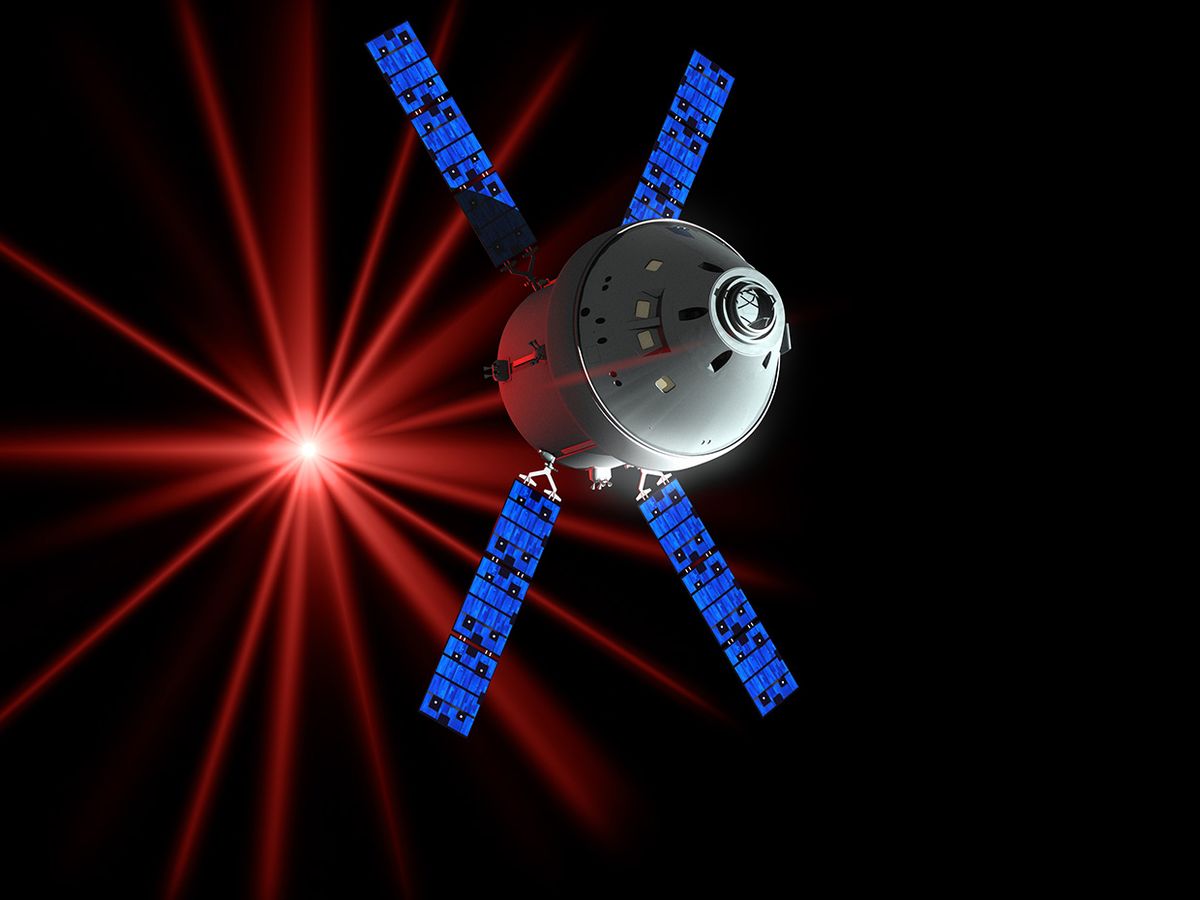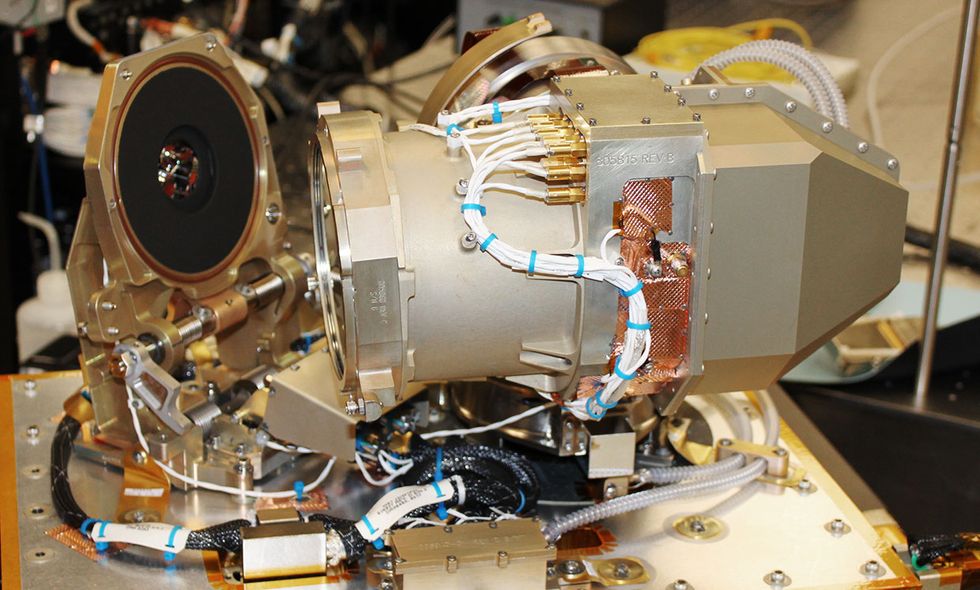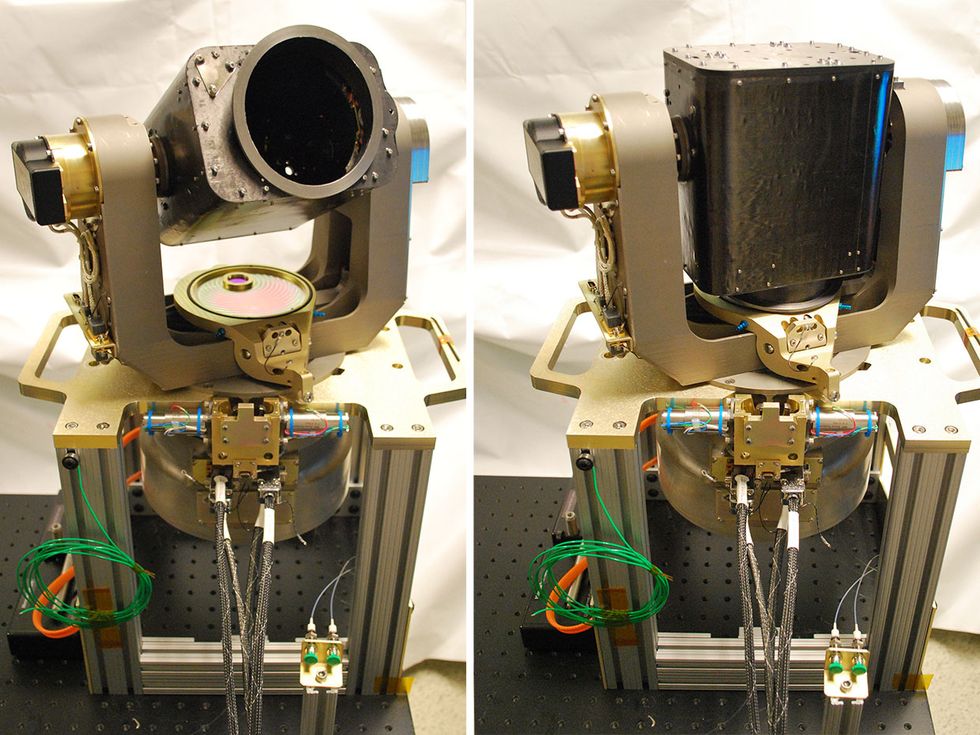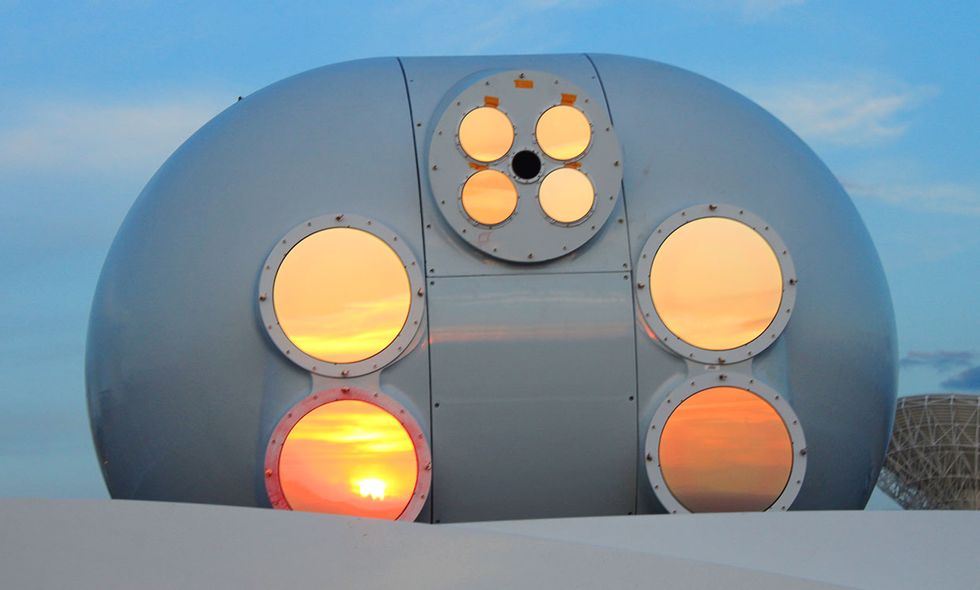Lunar Pioneers Will Use Lasers to Phone Home
NASA’s Orion and Gateway will try out optical communications gear for a high-speed connection to Earth

With NASA making serious moves toward a permanent return to the moon, it’s natural to wonder whether human settlers—accustomed to high-speed, ubiquitous Internet access—will have to deal with mind-numbingly slow connections once they arrive on the lunar surface. The vast majority of today’s satellites and spacecraft have data rates measured in kilobits per second. But long-term lunar residents might not be as satisfied with the skinny bandwidth that, say, the Apollo astronauts contended with.
To meet the demands of high-definition video and data-intensive scientific research, NASA and other space agencies are pushing the radio bands traditionally allocated for space research to their limits. For example, the Orion spacecraft, which will carry astronauts around the moon during NASA’s Artemis 2 mission in 2022, will transmit mission-critical information to Earth via an S-band radio at 2 megabits per second. “It’s the most complex flight-management system ever flown on a spacecraft,” says Jim Schier, the chief architect for NASA’s Space Communications and Navigation program. Still, barely 1 Mb/s will be allocated for streaming video from the mission. That’s about one-fifth the speed needed to stream a high-definition movie from Netflix.
To boost data rates even higher means moving beyond radio and developing optical communications systems that use lasers to beam data across space. In addition to its S-band radio, Orion will carry a laser communications system for sending ultrahigh-definition 4K video back to Earth. And further out, NASA’s Gateway will create a long-term laser communications hub linking our planet and its satellite.
Laser communications are a tricky proposition. The slightest jolt to a spacecraft could send a laser beam wildly off course, while a passing cloud could interrupt it. But if they work, robust optical communications will allow future missions to receive software updates in minutes, not days. Astronauts will be sheltered from the loneliness of working in space. And the scientific community will have access to an unprecedented flow of data between Earth and the moon.
Today, space agencies prefer to use radios in the S band (2 to 4 gigahertz) and Ka band (26.5 to 40 GHz) for communications between spacecraft and mission control, with onboard radios transmitting course information, environmental conditions, and data from dozens of spaceflight systems back to mission control. The Ka band is particularly prized—Don Cornwell, who oversees radio and optical technology development at NASA, calls it “the Cadillac of radio frequencies”—because it can transmit up to gigabits per second and propagates well in space.
Data Rates From the Moon to Earth
-
(Megabits per second)
80
Orion’s optical system
-
96.25
Average fixed broadband speed in the U.S.
-
622
Lunar Laser Communications Demonstration
Any spacecraft’s ability to transmit data is constrained by some unavoidable physical truths of the electromagnetic spectrum. For one, radio spectrum is finite, and the prized bands for space communications are equally prized by commercial applications. Bluetooth and Wi-Fi use the S band, and 5G cellular networks use the Ka band.
The second big problem is that radio signals disperse in the vacuum of space. By the time a Ka-band signal from the moon reaches Earth, it will have spread out to cover an area about 2,000 kilometers in diameter—roughly the size of India. By then, the signal is a lot weaker, so you’ll need either a sensitive receiver on Earth or a powerful transmitter on the moon.
Laser communications systems also have dispersion issues, and beams that intersect can muddle up the data. But a laser beam sent from the moon would cover an area only 6 km across by the time it arrives on Earth. That means it’s much less likely for any two beams to intersect. Plus, they won’t have to contend with an already crowded chunk of spectrum. You can transmit a virtually limitless quantity of data using lasers, says Cornwell. “The spectrum for optical is unconstrained. Laser beams are so narrow, it’s almost impossible [for them] to interfere with one another.”
Higher frequencies also mean shorter wavelengths, which bring more benefits. Ka-band signals have wavelengths from 7.5 millimeters to 1 centimeter, but NASA plans to use lasers that have a 1,550-nanometer wavelength, the same wavelength used for terrestrial optical-fiber networks. Indeed, much of the development of laser communications for space builds on existing optical-fiber engineering. Shorter wavelengths (and higher frequencies) mean that more data can be packed into every second.
The advantages of laser communications have been known for many years, but it’s only recently that engineers have been able to build systems that outperform radio. In 2013, for example, NASA’s Lunar Laser Communications Demonstration proved that optical signals can reliably send information from lunar orbit back to Earth. The month-long experiment used a transmitter on the Lunar Atmosphere and Dust Environment Explorer to beam data back to Earth at speeds of 622 Mb/s, more than 10 times as fast as Orion’s S-band radio will.

“I was shocked to learn [Orion was] going back to the moon with an S-band radio,” says Bryan Robinson, an optical communications expert at MIT Lincoln Laboratory in Lexington, Mass. Lincoln Lab has played an important role in developing many of the laser communications systems on NASA missions, starting with the early optical demonstrations of the classified GeoLITE satellite in 2001. “Humans have gotten used to so much more, here on Earth and in low Earth orbit. I was glad they came around and put laser comm on the mission.”
As a complement to its S-band radio, during the Artemis 2 mission Orion will carry a laser system called Optical to Orion, or O2O. NASA doesn’t plan to use O2O for any mission-critical communications. Its main task will be to stream 4K ultrahigh-definition video from the moon to a curious public back home. O2O will receive data at 20 Mb/s and transmit at 80 Mb/s while in lunar orbit. If you’re wondering why O2O will transmit at 80 Mb/s when a demonstration project six years ago was able to transmit at 622 Mb/s, it’s simply because the Orion developers “never asked us to do 622,” says Farzana Khatri, a senior staff member in Lincoln Lab’s optical communications group. Cornwell confirms that O2O’s downlink will deliver a minimum of 80 Mb/s to Earth, though the system is capable of higher data rates.
If successful, O2O will open the door for data-heavy communications on future crewed missions, allowing for video chats with family, private consultations with doctors, or even just watching a live sports event during downtime. The more time people spend on the moon, the more important all of these connections will be to their mental well-being. And eventually, video will become mission critical for crews on board deep-space missions.
Before O2O can even be tested in space, it first has to survive the journey. Laser systems mounted on spacecraft use telescopes to send and receive signals. Those telescopes rely on a fiddly arrangement of mirrors and other moving parts. O2O’s telescope will use an off-axis Cassegrain design, a type of telescope with two mirrors to focus the captured light, mounted on a rotating gimbal. Lincoln Lab researchers selected the design because it will allow them to separate the telescope from the optical transceiver, making the entire system more modular. The engineers must ensure that the Space Launch System rocket carrying Orion won’t shake the whole delicate arrangement apart. The researchers at Lincoln Lab have developed clasps and mounts that they hope will reduce vibrations and keep everything intact during the tumultuous launch.

Once O2O is in space, it will have to be precisely aimed. It’s hard to miss a receiver when your radio signal has the cross section the size of a large country. A 6-km-diameter signal, on the other hand, could miss Earth entirely with just a slight bump from the spacecraft. “If you [use] a laser pointer when you’re nervous and your hand is shaking, it’s going to go all over the place,” says Cornwell.
Orion’s onboard equipment will also generate constant minuscule vibrations, any one of which would be enough to throw off an optical signal. So engineers at NASA and Lincoln Lab will place the optical system on an antijitter platform. The platform measures the jitters from the spacecraft and produces an opposite pattern of vibrations to cancel them out—“like noise-canceling headphones,” Cornwell says.

One final hurdle for O2O will be dealing with any cloud cover back on Earth. Infrared wavelengths, like the O2O’s 1,550 nm, are easily absorbed by clouds. A laser beam might travel the nearly 400,000 km from the moon without incident, only to be blocked just above Earth’s surface. Today, the best defense against losing a signal to a passing stratocumulus is to beam transmissions to multiple receivers. O2O, for example, will use ground stations at Table Mountain, Calif., and White Sands, N.M.
The Gateway, scheduled to be built in the 2020s, will present a far bigger opportunity for high-speed laser communications in space. NASA, with help from its Canadian, European, Japanese, and Russian counterparts, will place this space station in orbit around the moon; the station will serve as a staging area and communications relay for lunar research.
NASA’s Schier suspects that research and technology demonstrations on the Gateway could generate 5 to 8 Gb/s of data that will need to be sent back to Earth. That data rate would dwarf the transmission speed of anything in space right now—the International Space Station (ISS) sends data to Earth at 600 Mb/s. “[Five to 8 GB/s is] the kind of thing that if you turned everything on in the [ISS], you’d be able to run it for 2 seconds before you overran the buffers,” Schier says.
The Gateway offers an opportunity to build a permanent optical trunk line between Earth and the moon. One thing NASA would like to use the Gateway for is transmitting positioning, navigation, and timing information to vehicles on the lunar surface. “A cellphone in your pocket needs to see four GPS satellites,” says Schier. “We’re not going to have that around the moon.” Instead, a single beam from the Gateway could provide a lunar rover with accurate distance, azimuth, and timing to find its exact position on the surface.
What’s more, using optical communications could free up radio spectrum for scientific research. Robinson points out that the far side of the moon is an optimal spot to build a radio telescope, because it would be shielded from the chatter coming from Earth. (In fact, radio astronomers are already planning such an observatory: Our article “Rovers Will Unroll a Telescope on the Moon’s Far Side” explains their scheme.) If all the communication systems around the moon were optical, he says, there’d be nothing to corrupt the observations.
Beyond that, scientists and engineers still aren’t sure what else they’ll do with the Gateway’s potential data speeds. “A lot of this, we’re still studying,” says Cornwell.
In the coming years, other missions will test whether laser communications work well in deep space. NASA’s mission to the asteroid Psyche, for instance, will help determine how precisely an optical communications system can be pointed and how powerful the lasers can be before they start damaging the telescopes used to transmit the signals. But closer to home, the communications needed to work and live on the moon can be provided only by lasers. Fortunately, the future of those lasers looks bright.
This article appears in the July 2019 print issue as “Phoning Home, With Lasers.”
This article was updated on 15 July 2019 to correct several uplink and downlink numbers.


